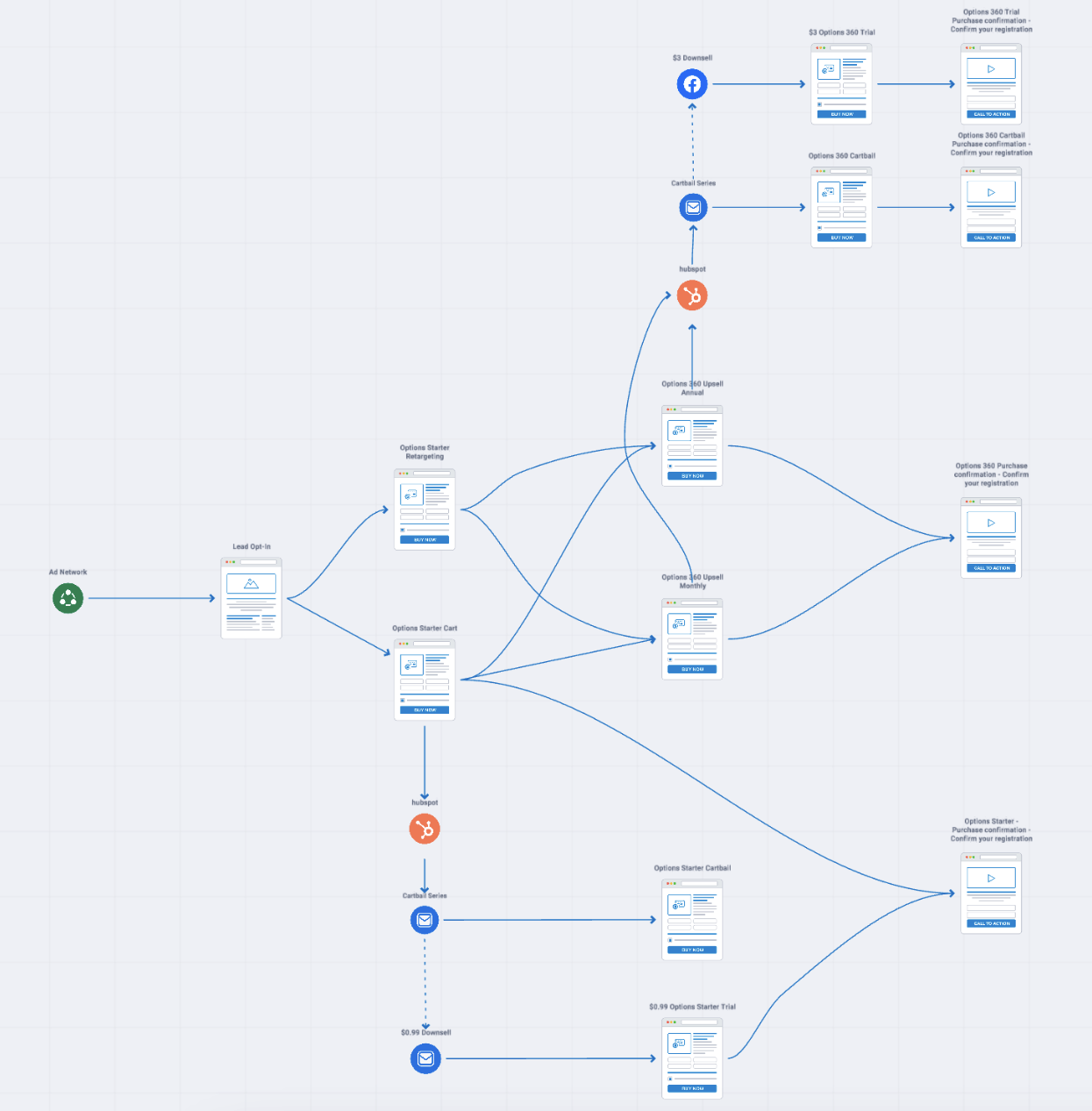If you own a business of any kind, having a website that functions smoothly and represents your brand effectively is crucial for success. However, as technology continues to advance and consumer expectations evolve, it’s important to regularly evaluate whether your website is up to par. In this blog post, we will explore five signs that indicate it’s time to update your website, and why it’s essential to stay current in the online world.
Why Updating Your Website is Crucial
Let’s first understand why having a current website is so important. Your website serves as a digital storefront for your business, giving potential customers an impression of your brand and what you have to offer.
The Role of Your Website in Business Success
Your website plays a significant role in your overall business success. It acts as a hub for showcasing your products or services, engaging with your audience, and generating leads. A well-designed and up-to-date website not only establishes credibility but also helps create a positive user experience, leading to increased conversions and customer loyalty.
Imagine a scenario where a potential customer stumbles upon your outdated website. They may perceive your business as stagnant or unprofessional, which could lead them to explore other options. On the other hand, a current and visually appealing website can captivate visitors, making them more likely to explore further and convert into paying customers.
How Often Should You Update Your Website?
While there is no one-size-fits-all answer to this question, it’s generally recommended to update your website every 2-3 years to keep up with current design trends, technological advancements, and changing user expectations. However, certain signs might indicate the need for more immediate updates. Let’s explore these signs in detail below.
Signs that Your Website Needs an Update
1. Slow Loading Speed: If your website takes forever to load, it can frustrate visitors and drive them away. Slow loading speed can be caused by various factors, such as large image sizes, outdated coding, or inadequate hosting. By updating your website, you can optimize its performance and ensure a seamless user experience.
2. Outdated Design: Design trends evolve rapidly, and an outdated website design can make your business appear behind the times. By giving your website a fresh look, you can align it with current design standards, making it more visually appealing and engaging for your audience.
3. Mobile Responsiveness Issues: With the increasing use of smartphones and tablets, having a mobile-responsive website is crucial. If your website is not optimized for mobile devices, it can lead to a poor user experience and negatively impact your search engine rankings. Updating your website ensures that it adapts seamlessly to different screen sizes and devices.
4. Ineffective Content: Your website’s content should be informative, engaging, and relevant to your target audience. If your content is outdated, lacks clarity, or fails to address your audience’s needs, it’s time for an update. By refreshing your content, you can provide valuable information and establish yourself as an authority in your industry.
5. Poor Conversion Rates: If your website is not generating the desired number of leads or conversions, it may be a sign that it needs an update. By analyzing user behavior, conducting A/B testing, and implementing conversion rate optimization techniques, you can improve your website’s performance and achieve better results.
By regularly updating your website, you can ensure that it remains a valuable asset for your business. Remember, a current website not only enhances your online presence but also contributes to your overall success in the competitive digital landscape.
Sign 1: Your Website is Not Mobile-Friendly
In today’s mobile-dominated world, having a mobile-friendly website is no longer an option but a necessity. With the majority of internet users accessing websites on their smartphones or tablets, a website that is not optimized for mobile devices can result in a poor user experience and lost opportunities.
The Importance of Mobile Optimization
Mobile optimization ensures that your website adapts seamlessly to different screen sizes and provides a user-friendly experience regardless of the device being used. This not only improves user satisfaction but also positively impacts your search engine rankings, as mobile-friendliness is a key factor that search engines consider when determining website relevance.
How to Check if Your Website is Mobile-Friendly
To check if your website is mobile-friendly, you can use Google’s Mobile-Friendly Test or simply browse your website on various mobile devices to assess its usability. If your website fails to deliver a smooth experience on mobile, it’s a clear indicator that it’s time for an update.
Sign 2: Your Website Loads Slowly
In today’s fast-paced world, speed is of paramount importance. If your website takes too long to load, visitors are more likely to abandon it and seek alternatives. Slow loading times not only annoy users but also have a negative impact on your search engine rankings, as search engines prioritize fast-loading websites.
The Impact of Loading Speed on User Experience
Research shows that even a one-second delay in website loading time can lead to higher bounce rates and decreased user satisfaction. In an era where instant gratification is the norm, your website must provide a seamless and swift experience to keep visitors engaged and increase the chances of conversion.
Tools to Test Your Website’s Loading Speed
To assess your website’s loading speed, you can use tools like Google PageSpeed Insights or GTmetrix. These tools analyze your site’s performance and provide actionable insights on how to optimize it for faster loading times. If the results indicate that your website is lagging behind, it’s a clear indication that an update is necessary.
Sign 3: Your Website’s Design is Outdated
Website design trends evolve rapidly, reflecting changes in user preferences and technological advancements. If your website’s design looks outdated compared to your competitors or fails to provide a modern and visually appealing experience, it’s time for a redesign.
The Influence of Modern Design on User Perception
A visually appealing and intuitive website design plays a crucial role in capturing the attention of your target audience and conveying your brand’s values effectively. A website that looks outdated can give the impression that your business is behind the times and lacks attention to detail, potentially turning potential customers away.
Comparing Your Website Design with Competitors
Take the time to explore your competitors’ websites and analyze their design elements, layouts, and overall user experience. If your website falls short in comparison, it’s a clear indication that updating your website’s design is necessary to remain competitive in the market.
Sign 4: Your Website Has a High Bounce Rate
The bounce rate refers to the percentage of visitors who leave your website after viewing only one page. A high bounce rate indicates that visitors are not finding what they are looking for or are dissatisfied with your website, leading to missed opportunities for conversions.
Understanding Bounce Rate and Its Implications
A high bounce rate can stem from various factors, including slow loading times, irrelevant content, poor navigation, or confusing layout. By analyzing your website’s bounce rate, you can gain insights into potential issues that need to be addressed to improve user engagement and encourage visitors to explore further.
How to Reduce Your Website’s Bounce Rate
Potential solutions to reduce your website’s bounce rate include improving page load times, ensuring a clear and intuitive navigation structure, creating compelling and relevant content, and optimizing your website’s layout for ease of use. Implementing these changes can help increase user engagement and decrease bounce rates.
Sign 5: Your Website Lacks Essential Functionality
As your business evolves and expands, so do the functionalities required on your website. If your current website lacks essential features, such as e-commerce capabilities, integration with third-party tools, or a content management system, it’s time to consider an update.
The Importance of Essential Functionality
Having the right functionalities on your website can improve user experience, streamline business operations, and facilitate customer interactions. Whether it’s the ability to sell products online, collect customer information, or provide interactive elements, ensuring your website has the necessary functionality is crucial for keeping up with the demands of a digital landscape.
The Process of Updating Your Website
When updating your website, it’s important to plan and strategize effectively. Strikepoint is an industry leader in website design and development, and we’d love to help you optimize your own site. Contact us today for a free website audit with our Creative Team.



